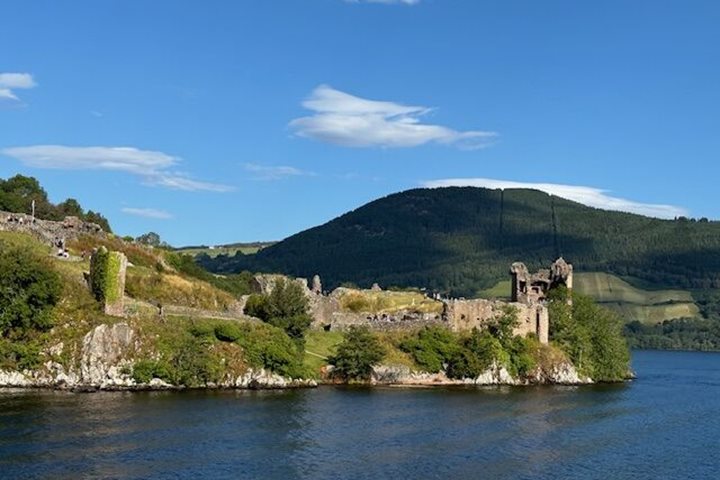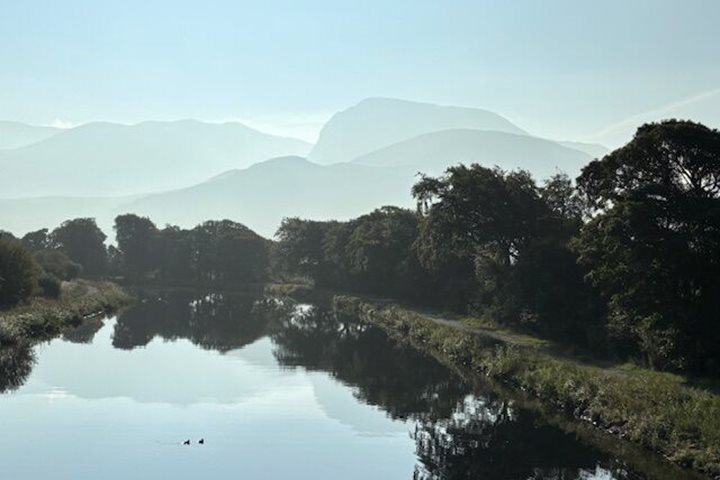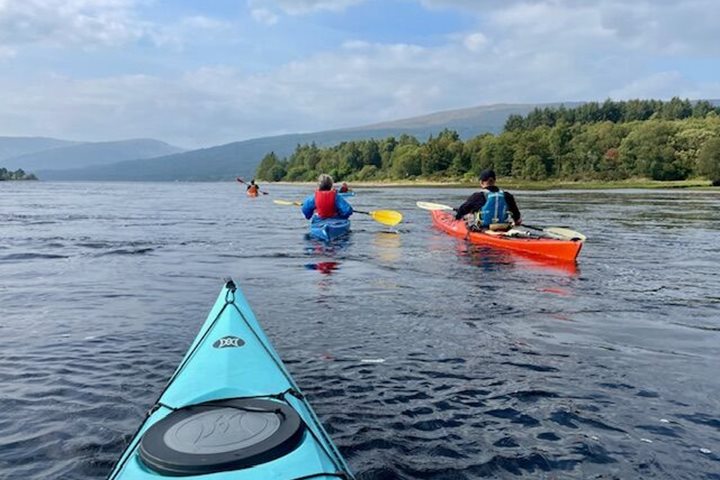We awoke to our first morning on board Lord of the Glens in the dramatic location of the Muirtown Basin in Inverness, within sight of the sea lock at Clachnaharry where the Caledonian Canal enters the Moray Firth and the tidal waters of the North Sea. Our direction of travel for the day would be westward, the ship moving up a sequence of locks out of Muirtown and on into the waters of Loch Ness, the largest body of fresh water in the British Isles, deeper at some points than the North Sea itself. What might lurk in its mysterious depths?!
First call, after a substantial Scottish breakfast (where else is whisky available to pour over your porridge?) was for our morning excursion to Culloden. It is the site of the last pitched battle in a civil dispute on the British mainland, where the Jacobites were routed and the Protestant dynasty of the House of Hanover secured its claim to the British throne. Just a generation earlier, Scotland had been welded to England and Wales in an act of union itself designed to secure a Protestant succession, the defining characteristic of the English state since the time of Henry VIII. When Queen Anne, a mother of 13 children all of whom had pre-deceased her, died in 1714 the Protestant ruling-class was in panic at the prospect of a Catholic Stuart succeeding to the throne. The Stuarts were a Scottish dynasty, naturally more popular north of the border—the rules of succession were on their side and in the Scottish Highlands, the old clan society was solidly Catholic. When the Stuarts raised their standard against the Hanoverian usurpers, as they saw it, Catholic Highlanders formed the bulk of their army. The sad end of the Jacobite Rising of 1745, prompted by the succession of George II to the throne, unfolded at Culloden. Following the battle there the surviving Jacobites were pursued and mercilessly cut down and a plan was enacted to rid the British mainland of its troublesome Highland Clansmen, through the proscription of clan customs, restrictions on the use of the Gaelic language and forcible emigration, the latter process known as the Highland Clearances.
Arriving at Fort Augustus late afternoon, the story continued. The modern settlement is named for Augustus, Duke of Cumberland, the Hanoverian monarch’s brother and commander of the Hanoverian army at Culloden. To the Highland Gaels he was known as ‘Butcher’ Cumberland and the Union Jack is sometimes referred to as ‘The Butcher’s Apron’. We offered kayaking on arrival and a circular walk that visited Cill Chuimein Burial Ground, sole survivor of the village that was cleared following the Battle of Culloden, the homesteads razed to the ground and the stone used to build walled enclosures for sheep that were so much more profitable for the landlord class than the Gaelic tenants had ever been.









